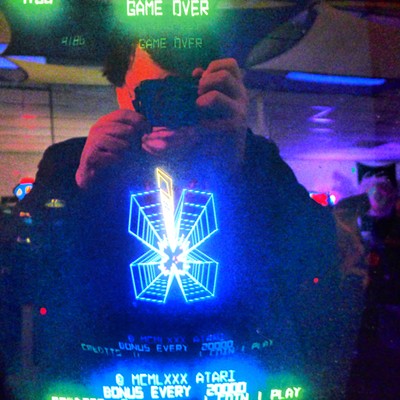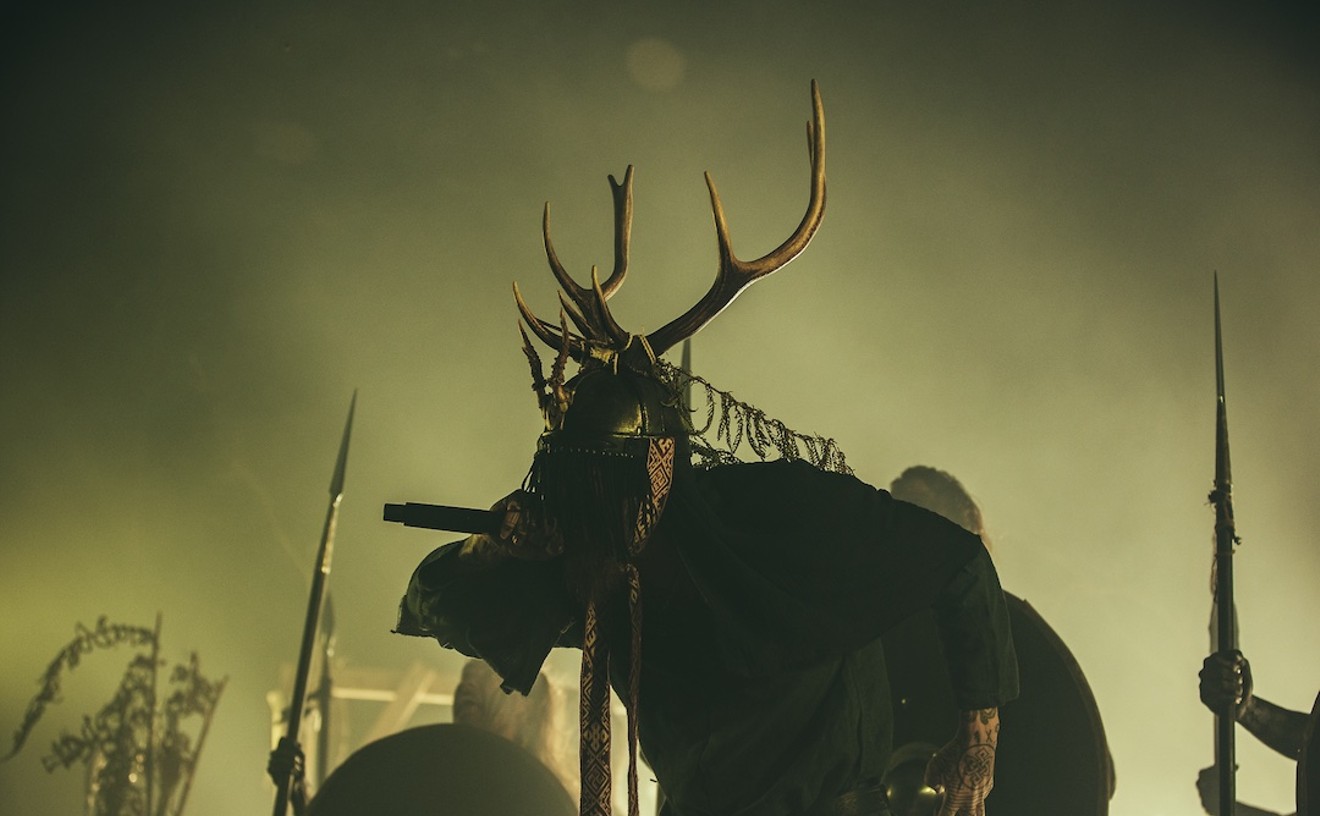Toro y Moi started as the solo project of Chaz Bundick, who took his solo musical endeavors to greater and greater heights of sophistication on a series of releases with the encouragement of his friend from school, Ernest Greene of Washed Out. Live, Bundick has likewise progressed from his early days of performing with a laptop and a few instruments to working with a full band and delivering a much fuller sound. One thing has remained consistent throughout, and that's the caliber of Bundick's songwriting.
See also: - Photos: Toro y Moi at the Larimer Lounge, 3/31/11 - Saturday: Toro y Moi at Bluebird Theater, 2/23/13 - Ernest Greene of Washed Out on how drums bring a different energy to the live show
Drawing a bit of inspiration from J Dilla, pop and psychedelia, Bundick has established himself as a consistently interesting artist that sounds like he's absorbed a lot of music, from '70s-era Gil Scott-Heron to the sounds of more soul-inflected, modern synth rock bands like Cut Copy. We recently spoke with Bundick about how he and Ernest Greene influenced each other, the shift of his two most recent albums, 2010's Underneath the Pine and 2013's Anything in Return, and the creative outlet provided by his side projects Sides of Chaz and Les Sins.
Westword: How did you meet Ernest Greene, and what do you feel he does especially well as a musician?
Chaz Bundick: I met him in school at someone's birthday party, and we started talking about music, and I think he's a super-awesome dude. We started exchanging music, and the next thing you know, we started working on stuff together. I guess that's when we both started getting recognized. That little time we had together definitely helped shape our sounds.
Is there anything in particular you felt you learned from him, and vice-versa?
A little bit. I had never used a laptop, really, to record music, so I learned a little bit of that from him doing sampling and stuff, seeing how he used samples. That was pretty inspiring, and it definitely influenced how I approach stuff now. He told me, too, several times, that he really likes the way I approach songwriting and how I always keep the song in mind and not just production.
Obviously you're a visual artist and you went to school for graphic design. What kind of art did you make before you went to college?
Nothing too crazy. I just did drawings and made screen prints when I could. Taking photos. I never even really did graphic design. I just do my own stuff -- album art and merchandise. The whole music thing just sort of picked up right after college.
Had you done music before college?
Yeah, I started doing CD covers and stuff in high school for bands I was in. I was always doing the flyers. I started making music at fifteen.
Was it electronic or more traditional instrumentation?
Sort of both. There was some stuff with drums and other stuff with acoustic guitar only and other stuff that was full-band sounding. It didn't start changing until I got a laptop in college, and that's when I started messing around with drum beats and using a laptop with digital interfaces.
What software got you your start with that kind of thing?
Fruity Loops. Then it went to me trying other stuff, and I moved on to Reason and tried that out and Ableton.
Do you use mainly Ableton for your live sets?
No, I use Reason.
What makes Reason a more attractive option?
I'm not really much of a VST kind of guy. It's enough to get the ideas out. It sounds good, too. It's kind of what I learned on, and it keeps getting better, and I'm totally satisfied with it.
Toro Y Moi started as a solo project?
It kind of still is. Except for the live show.
What's the most significant change you had to make in presenting the music live? Obviously you write the music yourself.
The biggest change was to have the live show be effective. At first it was just laptop and MIDI controller kind of thing. It was enough to make the songs sound like how they sounded on the album, but I wasn't comfortable playing those behind a laptop. I felt kind of naked on stage. I always felt like a live band is what you need to have good live shows, especially for these kinds of songs. There's beat makers out there that don't need a live band, but I'm not a beat maker, you know.
Are the people that play with you live people you've hired, or are they more invested in the material?
No, they're friends from high school and college. We've all been in bands together back home. We play on each other's songs and we're all familiar with each other's styles. In the live setting, there is more personal style influencing the performance. In the studio, it's kind of just me still in the songwriting process.
Presumably you've done the cover art for your releases thus far?
Right. Except for Anything in Return. John Stortz, an artist friend of mine, drew that. I did some additional graphics for it.
That picture looks like it's supposed to be a representation of you.
It is.
And the picture on the cover of Underneath the Pine is you as well?
Yeah, that's my face. It's not uncommon to have the artist's face on an album cover. So I kind of wanted to mess around with that. I've done album covers before where my face wasn't on it. I wanted to do it in a tasteful way and not in an egotistical way.
Continue reading for more from Bundick.
Maybe this is reading too much into it, but you did the design and your friend did the drawing. Do you feel that a shift in the type of imagery reflects a shift in the music as well?
Possible. I'm open to the idea of collaborating more and more. In a way, you're right. I knew I didn't want to draw something. I wanted someone else to draw something. I know that I didn't want to just make music by myself all the time, so it's possible.
Your early work was compared to J Dilla and Flying Lotus. Was their work an inspiration or influence on what you've done?
Definitely. Mainly J Dilla. He was the first one I really listened to. His samples opened my eyes. I never really thought about sampling in that way. I think his influence still shows for sure.
What quality of his samples opened your eyes and made you think about things differently?
Just the sonic quality, how compressed they were, how crunchy they were. Just breaking those rules were awesome the first time I heard it. Not only that, he was just influenced by so many things, not just hip-hop. Everything from psychedelic rock and pop and that's exactly what I'm influenced by, too.
Anything in Return has a smokier feel to it than your previous records.
Yeah, I would say that, with Underneath the Pine, there was a feel that was softer and I guess a more pastel color palette. Anything in Return is more, like, heavier and in bolder colors. Very poppy. It has a more vibrant feel to it. I guess that shows, too, in album covers.
You have projects called Sides of Chaz and Les Sins, respectively. Why would something you produce fall into the realm of those projects?
[With] Sides of Chaz, it's just an excuse for me, or an outlet for me, to make weirder stuff and not feel subconscious about it being accepted or not. It's totally okay to put out a weird track. Just change the name; it's okay. Toro Y Moi, you're not degrading the discography or anything like that. I kind of want to keep Toro Y Moi a solid project and have my side projects be my room for experimentation and finding new stuff and then refining those elements in Toro Y Moi. It doesn't have to be released, it can just be a tour CDR.
Not everything I like to do is pop music. I'm sure there are plenty of musicians that would like to make a different kind of song than what they're known for. They feel stuck or something. I felt like I didn't want to be in that position ever, so I always wanted to keep making stuff.
Follow @Westword_Music











